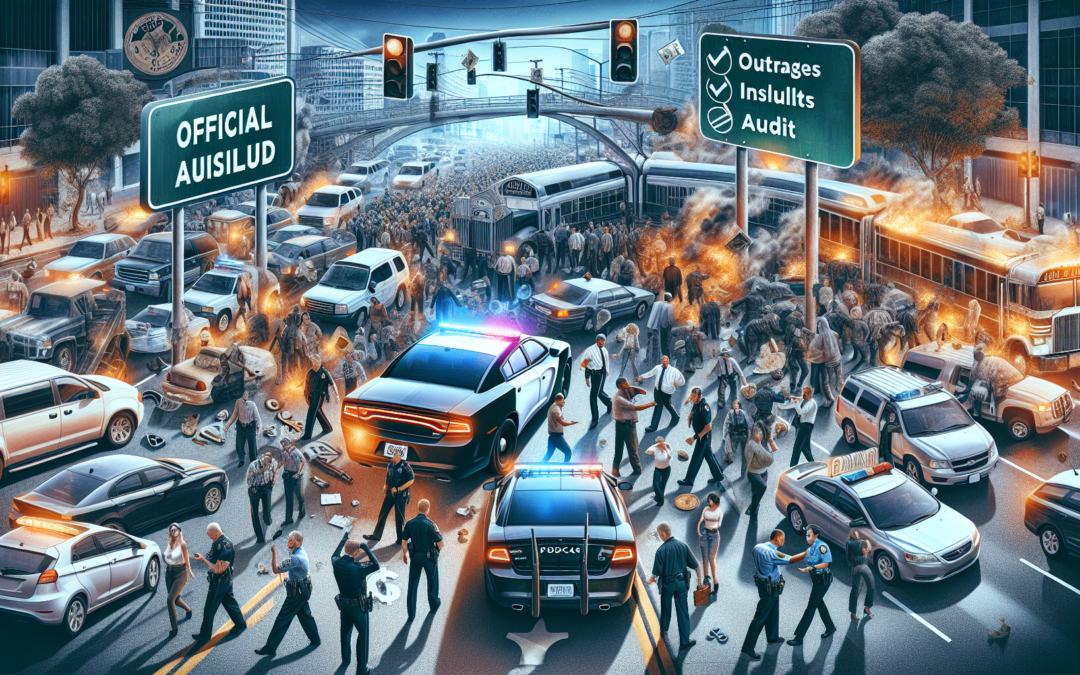Behind the Badge: The Unyielding Resolve of Law Enforcement During Traffic Stops
In the flashing hues of red and blue, the life of a law enforcement officer unfolds into countless scenes of unpredictability cloaked in the shadows between duty and danger. Traffic stops, often perceived as routine, become critical junctures where split-second decisions evolve into pillars that uphold or, at times, even unravel the social contract between guardian and public.
The Tension of the Unforeseen
For the average citizen, a traffic stop may seem like a minor inconvenience or an unnecessary pause in their daily rush. However, for the officers initiating the stop, each moment is a brewing cauldron of anticipation. There is nothing pedestrian about halting a speeding vehicle when the true narrative is veiled behind tinted windows and uncertain reflections. The badge that clinks at their chest compels them forward with caution—invoking highly trained instincts reserved for such encounters while steel nerves buffer the edginess of the unknown.
It is in these fragments of time that officers step into an evolving theater of human experience, armed with only duty, protocol, and a vigilant hope to navigate the terrain safely. Inside the vehicle might be families, single commuters, or individuals unlawfully armed—each scenario painted in shades of risk and determination.
Balancing Authority and Empathy
Navigating the fine line of authority and empathy demands nuanced tactical savoir-faire that officers have refined over years of training and exposure. They’re not just enforcers of statutory law but ambassadors of civil behavior, negotiating respect at both ends of the driver’s door. Their uniform automatically becomes a potent symbol of contradictory impressions: for some, it’s the reassurance of protection; for others, it’s the epitome of enforced muteness masquerading as order.
Every decision from the crucial first impression to the deft completion of the stop reflects a mantra of maintaining professionalism. Officers tread the delicate facade of power—a concept innately abhorrent when miscommunicated but, conversely, a lifeline when deployed with clarity and just cause. Their words and gestures become symphonies of de-escalation in a bid to foster citizens’ cooperation without exerting the chilling dictate of unintelligible authority.
The Solitude of Service
The stark truth for many officers, though surrounded by the sprawling community and vast resources of their department, is the solitude they face at each stop. Within their hollow shield of authority, loneliness permeates even amidst sirens and radio chatter. They endure relentless pressure to exhibit unwavering strength while, beneath it, lies the fallibility common to any citizen in moments of reactive distress or moral conflict.
There are countless exchanges in their day burdened with silent gratifications rarely celebrated—dark narratives that never seep into public consciousness yet dilute the fabric of fear binding urban or rural decay. To the brave men and women in blue, navigating these volatile oceans is par for the course. Only individuals whose fortitude echoes the lasting perseverance of keystones, holding civilizations aloft, can stand immovable beyond the clutches therein.
The Brotherhood of the Badge
From the moment recruits bind their commitment to the emblem of law enforcement, they inherit not just protocol but a fraternity of understanding engraved by shared experiences. Here lies a potent bond—nurtured through midnights where traffic surges dwindle and consequence grows amicable with apathy. Whether performing high-wire instinctual feats or responding with battle-worn camaraderie, officers never cease to thrive through peer-analog exchanges that interweave hearts burdened and steeled together by mutual earnestness.
Furthermore, in episodes laden with vicarious trauma, their fraternity dissolves isolation through collective endurance. Conversations effuse safety beyond physical surmise—extending toward an embrace cradling humanity’s melancholic remnants retrieved over mute rolls of struggle and triumph. When faced with desolation, they bloom into networks, establishments marrying personal with professional realms that ground and elevate these heroic custodians of safeguard.
New Realities in a Digital Age
In today’s interconnected age, the landscape of policing—especially during traffic stops—has transformed extensively. The advent of technology means officers must also contend with being constantly under surveillance as both citizens and potentially fellow officers wield cameras ready to document any event at a moment’s notice.
In this age of social platforms and instant shares, critique transcends immediacy, turning every procedural maneuver into a potential landscape for viral scrutiny. Law enforcement must therefore adapt to a dual responsibility—doing their duty while anticipating and managing public perception in real time.
While some may victimize officers in the symbiotic battle dance teaching and revising constitutionality, these civic knights persevere with dignity. They are acutely aware of this reality and more resolved to serve impartially despite the transient tumult—a constant motif in their ongoing duty to balance action with sensibility.
To explore more on this subject, check out The John Ligato Show, which delves into these dynamics extensively. Watch the latest engaging episode Here and engage with the show’s vibrant community on Facebook.
Indeed, traffic stops may bookend overwhelming shifts, yet within each transient pause rests an eternal narrative—one chronicling bravery fashioned in truth’s whethered grasp.

Recent Comments